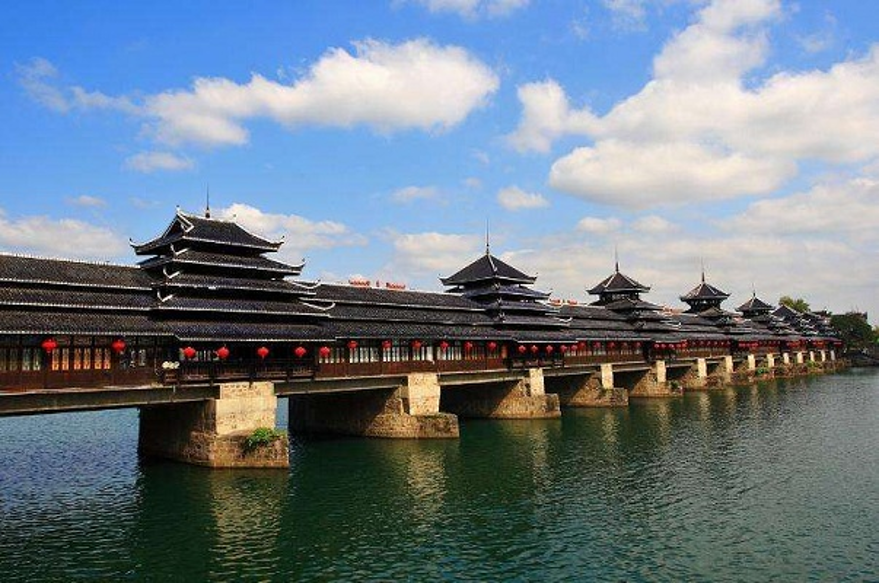Confucius
Institute
Dong Dance: Sa Ye
Video: Dong Dance: Sa Ye 5:16
Acknowledgment: all copyrights of the dance videos and photos reserved to Central China Normal University (CCNU)
The Dong people (Chinese: 侗族, Pinyin: dòng zú) is one of the largest ethnic minorities in China. They call themselves “Kam or Gaeml people” who live primarily in the mountains and are protected by the forests. Most of the Dong people live in China’s inland areas such as Guizhou Province, Guangxi Zhuang Autonomous Region, and Hubei Province. According to China Statistical Yearbook 2021, their population was around 3.4 million.
It is believed that the Dong people was descended from the ancient Baiyue. They have a long history of rice planting and cotton weaving. The Dong people are also known for their unique carpentry and construction skills. Their beautiful wooden covered bridges called “Wind and Rain Bridges” (Chinese: 风雨桥, Pinyin: fēng yǔ qiáo) is an architectural masterpiece - no nails have been used to build them. The pavilions on the bridges can shelter people from wind and rain, enabling these sociable Dong people to catch up with each other even in bad weather. UNESCO has placed 18 Dong villages on a tentative list of “World Heritage Sites” in China.

A Wind and Rain Bridge (Image sourced from gujianchina.cn)
The Dong people are partygoers. In a year, they celebrate more than 100 festivals with different themes of celebration such as seasonal changes, harvest, ancestor worship, heroes and deities, sports, etc. As a result of the cultural integration with the Han people, the Dong people also celebrate mainstream festivals such as Qingming Festival (Tomb-Sweeping Day), Dragon Boat Festival, and Mid-Autumn Festival these days.
Like many other ethnic groups, the Dong people worship gods and goddesses. In the Dong’s mythology, "Sa" (Chinese: 萨, Pinyin: sà) is the queen of many deities, enjoying the position of supremacy and protecting the Dong people. Sa could be originated from a legendary Dong heroine in ancient times.
In Dong villages, people would pray to Sa for protection and peace of mind. They will perform dance and/or hold a competition using musical instrument of “lushing” (Chinese: 芦笙, Pinyin: lú shēng) whenever there are important events and festivals coming up.
"Ye" (Chinese: 耶, Pinyin: yé) is a traditional Dong performance being passed down from generation to generation. The performance typically combines group singing with dancing. The performers would form a circle to dance which is complemented by their chorus of antiphonal songs. Originated possibly from a sacrifice ceremony, Ye now has become the most popular entertainment during Dong festivals and is an important way to showcase their artistry of music.
CCNU’s students performed this dance with an aim to celebrate the Dong people’s passion for their ancestral legends and optimistic spirit. The umbrella symbolising a hoe, a lushing, and the pavilions on a wind and rain bridge has created such beautiful visual effects. Please enjoy!
The University of Newcastle acknowledges the traditional custodians of the lands within our footprint areas: Awabakal, Darkinjung, Biripai, Worimi, Wonnarua, and Eora Nations. We also pay respect to the wisdom of our Elders past and present.